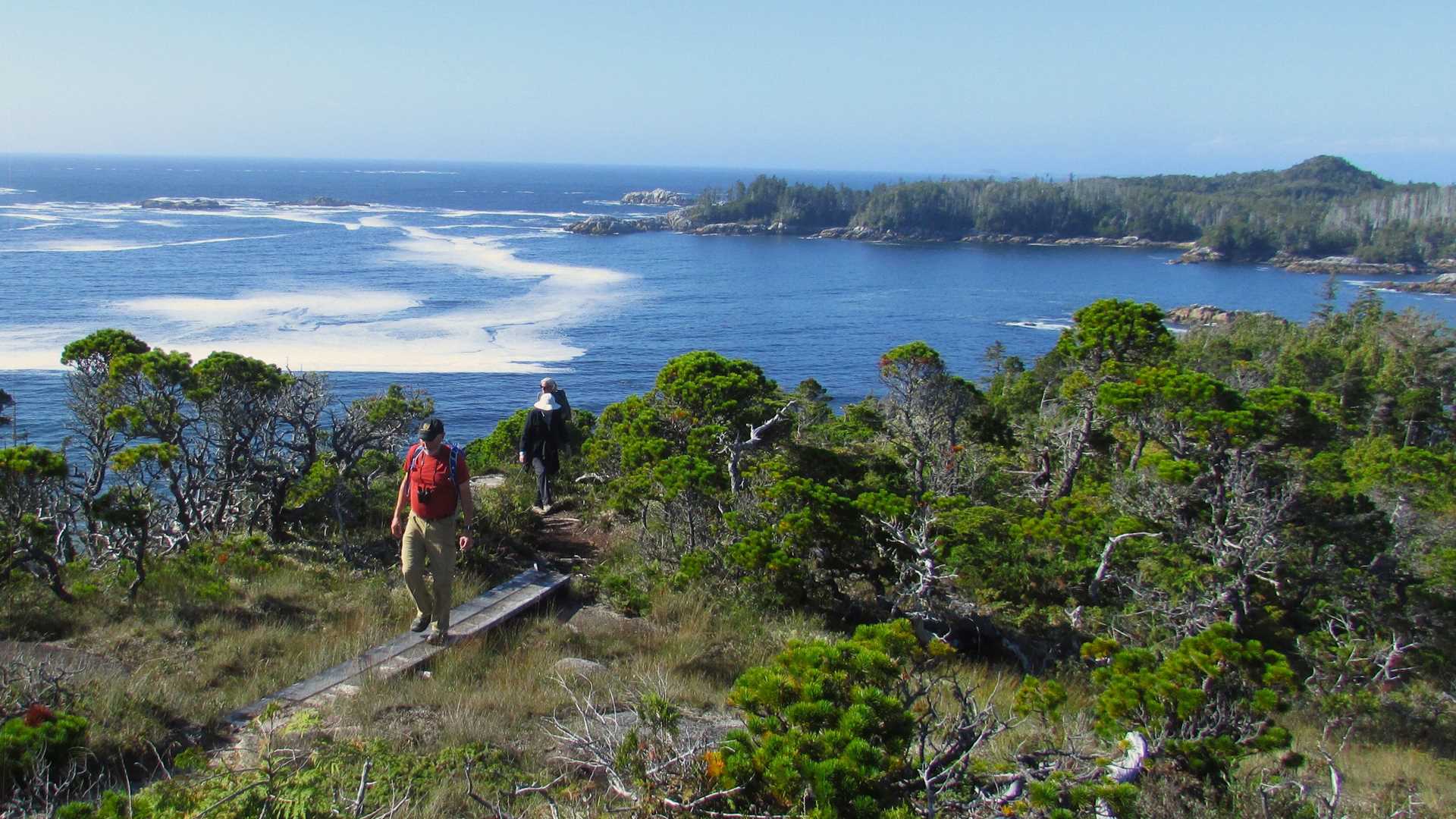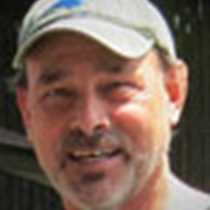Sunrise caught up with us near the town of Bella Bella, British Columbia. After a day of exploring the Great Bear Rainforest wilderness, it was odd to view a picturesque lighthouse and then the intricately painted longhouse dominating the view of the town wharf. A dozen ravens danced in the wind above the waterfront as if to say hello as we passed.
Post breakfast, there was a brief shopping spree at National Geographic Sea Lion’s global store. We enjoyed a fascinating presentation by Linda Tollas, our on-board guest and native guide from Haida Gwaii. She spoke about the relationship of the Haida people to yellow cedar and western red cedar and the many roles these trees play in the people’s lives and culture, from clothing to canoes.
A wonderful surprise awaited us this afternoon. Our original plans to explore Hecate Island were scuttled, but our fearless expedition leader, Dana Filippini, discovered we were near the Hakai Institute. This well-funded science center also produces an informative podcast, and Dana is a fan. The Hakai Institute is dedicated to studying coastal British Columbia, “from whitecaps to whitecaps,” as Alyssa Gamon, one of their intertidal researchers, told our group during a brief orientation. In other words, from glacier covered peaks to the open ocean, the institute combines technology and science to learn how biodiversity changes as our climate changes.
Located on beautiful Calvert Island and lands encompassed by British Columbia’s provincial park system, we were welcomed and given permission to explore the well-maintained trails to our hearts’ content. And explore we did! Somehow Dana had also arranged for a warm and sunny day to grace the wide, wild beaches and forested headlands. The granitic rocks of the island produce a fine, light-colored sand, and low tide uncovered vast stretches of gently sloping beach upon which to wade and wander.
Some of us opted to climb to an overlook where the spruce, hemlock, and cedar forest gave way to northern muskeg plants like Labrador tea, crowberry, bog laurel, club moss, and long-leaf sundew. No bears live on the island, but a population of wolves left tracks in one of the bog ponds near the summit. The view of the ocean and the rock shoreline was stunning.
The crystal-clear waters of the cove enchanted our undersea specialist, Luke Manson, to no end. From the dock alone, we could see jellies of all sizes, but Luke deployed the ROV and discovered thousands of hooded nudibranchs, a rarely seen mollusk with a head shaped like a cross between a net and a basket.
A fine evening at anchor with delicious food and drinks followed by a presentation on marine mammals of the Northeast Pacific brought an end to a day filled with serendipity.







